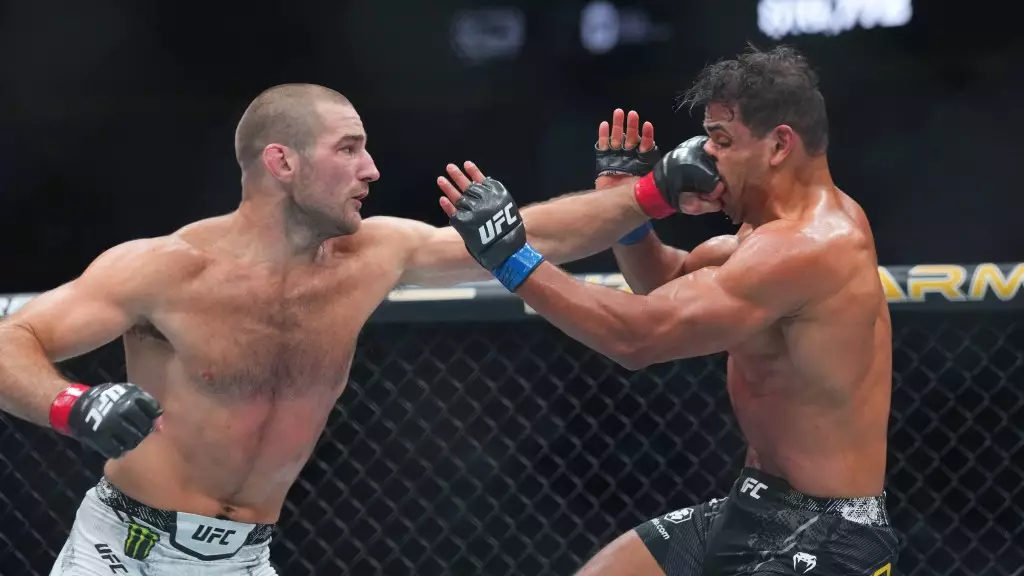In the cutthroat realm of mixed martial arts (MMA), an athlete’s career often dances on the razor’s edge between raw talent and marketability. Sean Strickland embodies this duality better than many. With a professional record of 29 wins and 6 losses, and a UFC tenure marked by a 16-6 record, he has faced scrutiny for his propensity to promise thrilling brawls yet frequently find himself in decision victories. As he prepares to challenge Dricus Du Plessis for the middleweight title, the narrative surrounding Strickland grows more complex.
Strickland has built his public persona around declarations of violence. His insistence on engaging in striking-only battles showcases a desire for ferocity in the cage, elevating expectations for his encounters. However, critics, including Du Plessis, are quick to highlight a disparity between Strickland’s impassioned rhetoric and the reality of his technical fight outcomes. This contention raises an intriguing question: does Strickland’s fighting style undermine his proclaimed intentions for violence, or does it illustrate the tactical nature of elite competition?
In a recent exchange, Strickland dismissed the criticism regarding his fighting style, suggesting that true competition among elite fighters transforms bouts into strategic chess matches rather than all-out brawls. According to Strickland, when facing opponents of substantial caliber, the fight naturally evolves into a carefully orchestrated battle of wits where each fighter’s strength becomes paramount. His reference to fighting Johnny Eblen underscores this point; when two world-class strikers converge, the requirement for technical precision supersedes the idea of trading blows aimlessly.
Strickland has often been subject to the ire of fans and critics for the number of close decision wins on his record. Du Plessis’ pointed remarks about Strickland’s past performances feed into a narrative that questions the legitimacy of his successes. Strickland himself admits that the judges’ perspective may be clouded by the inherent difficulties in assessing striking effectiveness, particularly when tensions run high. He articulates that the dynamics of the cage—limited visibility, smaller gloves, and the high-stakes atmosphere—create challenges that can distort the reality of a fight’s action.
As Sean Strickland gears up for his title rematch against Dricus Du Plessis, the clash of philosophies will not just play out within the octagon but also in the court of public opinion. The juxtaposition of his aggressive declarations and tactical fighting style invites further speculation on what to expect from this matchup. Will Strickland rise to the occasion, silencing his critics with his promised violence, or will he once again grapple with the meticulous dance of elite competition? One thing remains certain: as the stakes escalate, and the lights shine bright, Strickland must navigate both his internal and external battles, ultimately aiming to redefine his legacy within the sport.

